15 Cool Facts About Mayans
Most civilized
Mayan civilization is one of the most civilized Indian nations of indigenous America settled on the Yucatan Peninsula in Mexico, Honduras, El Salvador and Belize and also neighboring Guatemala. Today there are about 2 million members who are direct descendants of the Mayan people.
Language
Language of Mayan civilization is a linguistic family Mayan. It was spoken at least 3,000 years in the areas where these people built their culture. From ancient Maya language to date has developed several related languages used by their descendants Yucatec Maya, Mopan, Lacandon, Itzá, Cruzob and Icaiche. Today’s Mayas speaks modern Maya languages that are directly evolved from the ancient proto-Mayan language
Six tribes
Mayans are divided into six tribes, namely: Maya (Yucatec), Mopan, Lacandon, Itzá, Cruzob and Icaiche. All other groups form a special group within the Mayan family and do not belong to the real Mayans.
City-states
Mayan civilization have never created a unitary state, but the empire was divided into many city-states some of which are temporarily had supremacy over others or were linked in alliances cities.
Mayan roads are still in use
Their cities were connected by a network of roads some of which are still in use. Some of the most important cities were Comalcalco, Palenque, Copan, Altun Ha, Calakmul, Uaxactún and Quiriguá and Tikal. In Mayan empire during classic period (c. 250–900 AD) lived about 2,000,000 people. The largest and most luxurious city of Tikal had between 75.000 to 100.000 inhabitants.
Spaniards in the Yucatan
With the arrival of the Spaniards in the Yucatan (1520) ends the free life of this nation who are already living the jungles. In 1524 the Spaniards, led by Pedro de Alvarado smoothly conquered the southern part of the peninsula. In 1528 the northern part occupied by Francisco de Montejo. The conquest of Yucatan was completed in 1546, but Mayan civilization still resisted the Spaniards.
Mathematics, astronomy…
Maya people achieve high achievements in mathematics, astronomy (they had a calendar which neither today’s calendars not surpasses), construction, arts and had their letter. Therefore, they are often considered the most developed civilization of the New World. Read more about Mayan calendar.
Mayan pyramids
Mayan pyramids are so acoustic to whisper heard 170 m far. In the pyramid of El Tajin in Mexico there are 365 niches, each of them the sun shone only once a year. Pyramid of Kukulcan in Chichen Itza is a kind of astronomical clock which marks the arrival of winter and summer solstices and the spring and autumn equinox. When in those days the sun falls on the pyramid, gets the see the snake that climbs and descends a series of its surface made of 91 steps on each of the four sides of the pyramid. Together with a platform on top of the pyramid, the four staircases are 365 stairs, or yearly calendar.
Beauty crossed eyes
Interestingly, the ancient Mayan civilization considered a sign of beauty crossed eyes. The status is also expressed with the piercing on the ears, nose, and various ornaments on the body. Often members of the senior status their teeth adorned with jade and other sacred stones.
Skull
It should be noted that with Maya was common deformity of the skull. High and flat forehead was considered a sign of beauty. Flat forehead they have achieved with the tying boards at the head of infants (until skull bones have not yet been fully merged), which were left tied for days.
Jaguar in Mayan mythology
In Mayan civilization mythology, Jaguar is one of the most powerful symbols. Jaguar is the sovereign ruler of the underworld, the symbol of the so-called “night sun” and darkness. This ancient civilization is deeply believed that the day and night are two separate, private world. Daily life and the land were associated with daylight, while the darkness was reserved for the souls of the dead. The only link between the two worlds was a Jaguar.
Human sacrifice
As for the many civilizations of the time, and for the Maya is one of the most important ceremony was an act of human sacrifice. Although the Maya did not so often practiced as the Aztecs, various acts of bloodletting have become common, and (finally) is essential for the life in Mayan civilization. Mayan kings ruled by a semi-divine right, and that they believed that their relationship with the gods can take place only through the ritual of sacrifice.
Heart of living victims
All temples (built in staggered design) were constructed with the altar at the top. On the altar were placed human sacrifice. With stone blades, specially designed for this purpose priests cut breast, and as the blood flowed down the altar of the stair of the temple, quickly and decisively were tearing the heart out of still living victims. It was a ritual offer to the gods that allowed Mayan kings to keep absolute control over his people.
Deities
Maya had a large number of deities, and at least 166 had its own name. Each of them owned a few aspects. Some were both male and female, some were in turn able to be both young and old at the same time, and each deity who represented some of the celestial bodies had their different face for the Underworld, which appeared when the deity “die” every evening.
Lacandón people
Lacandón is a small group that consists of 200 people (according to the census of 1980) and attracted great interest of researchers because they have never been baptized and still practice the ancient religion of Maya, which puts them under a lot of pressure by the modern civilization. 50s of this century Lacandón people are still going to hunt with a bow and arrow.

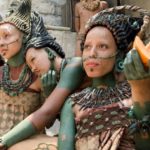
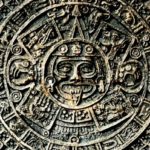
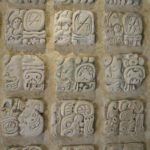
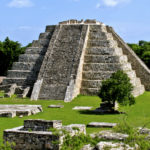
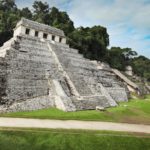
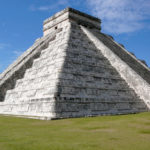
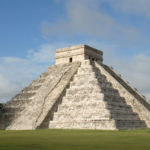
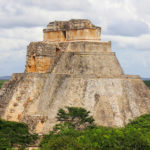
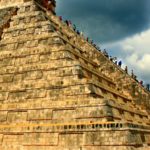
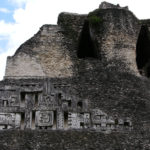
Comments are closed.